More Ford car owners from next year will get to experience – legally – driving along a motorway without having to place their hands on the steering wheel.
The American car giant has announced that its semi-autonomous BlueCruise Tech will be made available on four new models to allow thousands of UK customers to experience hands-free motoring.
The first of its kind system was approved in Europe in 2023, but so far only Mustang Mach-E drivers in Europe have had access to the feature.
But Ford confirms that it’s best-selling Puma, electric Puma Gen-E, Kuga SUV and Ranger PHEV pick-up will also have the system installed from spring 2026.
Torsten Wey, manager of ADAS [Advanced Driver Assistance Systems] features and software for Ford in Europe, said: ‘We’re committed to putting cutting-edge technology in the hands of more drivers. With BlueCruise now available on five vehicle lines in Europe, we’re helping make hands-free highway driving accessible to a wider array of customers.
‘Every vehicle line is unique, and our team of ADAS engineers have been working to expand BlueCruise beyond Mustang Mach-E to ensure a quality hands-free highway driving experience no matter which vehicle a customer chooses.’
So, as the BlueCruise autonomous rollout continues, what exactly is it and how does it work? We answer your hands-free driving questions…
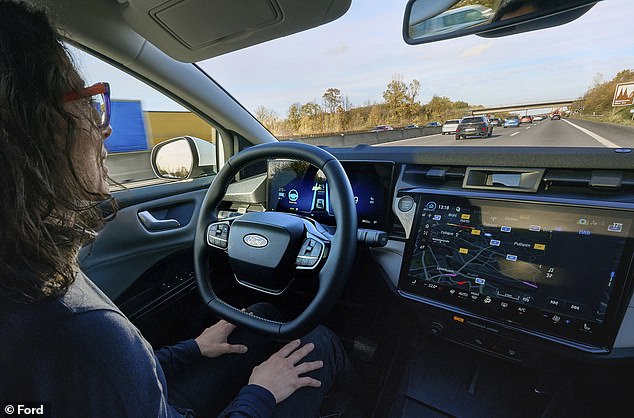
Ford has announced that it is bringing its autonomous BlueCruise Tech which allows hands-free mtoorway driving to a further four models from Spring 2026
What is BlueCruise?
Ford BlueCruise is the first ‘partial automation’ assisted driving feature approved for use on European roads. It’s supposed to make long stints of motorway driving more comfortable.
The Level 2 (hands off, eyes on) automation feature can only be activated when the car is driven on motorway. Drivers can take their hands off the wheel but eyes must be kept on the road at all times.
Cabin cameras scan the driver to make sure they are still paying attention, and the vehicle will automatically brake if the driver fails to take back control when prompted.
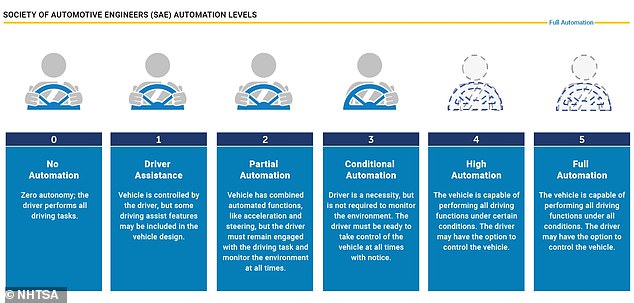
BlueCruise is designated Level 2 automation: drivers can take their hands off the wheel while it’s activated but they must keep their eyes on the road at all times and be able to take back control of the vehicle immediately if prompted
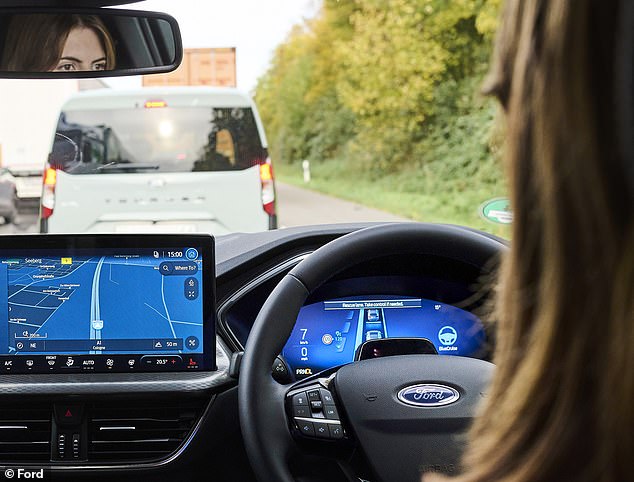
The Department for Transport (DfT) approved BlueCruise in 2023, and it launched in Great Britain
When was BlueCruise introduced?
The Department for Transport (DfT) approved the use of Ford’s BlueCruise system on Britain’s motorways back in 2023.
It’s since been approved in 16 European markets making it the most widely available system of its kind in Europe.
Already there are more than one million BlueCruise-equipped vehicles on the road around the world and drivers have covered more than 888million kilometres (552million miles) with BlueCruise.

This map shows the designated Blue Zone motorways the DfT has approved for use of Ford’s BlueCruise system

BlueCruise can only be activated via a button on the steering wheel when the car is being driven on a motorway that’s within a ‘Blue Zone’
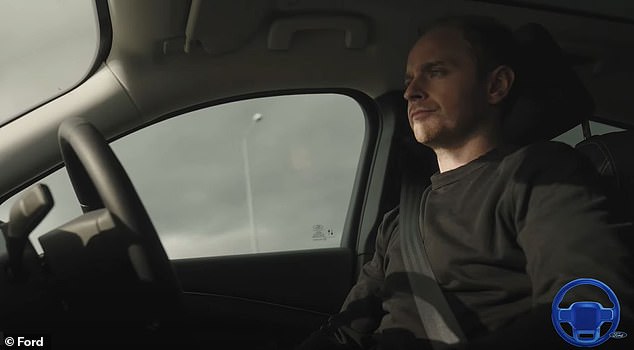
Blue Zones have been designated using geofencing technology that utilises GPS to create a virtual boundary in which the system can only be activated. This – currently – is strictly motorways following approval from the DfT. Lane markings also need to be visible to the system’s forward-facing cameras at all times in order for it to work
Which roads can BlueCruise be used on?
BlueCruise can only be operated on motorways within Ford’s Blue Zone, which has to be approved by the DfT in Britain.
Blue Zones have been designated using geofencing technology that utilises GPS to create a virtual boundary in which the system can only be activated.
Lane markings on the motorways selected must be visible to the system’s forward-facing cameras at all times in order for it to work.
It can legally be activated on 2,300 miles of motorways across England, Scotland and Wales – and that includes the busy M25 and M4.
With 16 countries in Europe approving BlueCruise, that means 84,000 miles of designated motorways, called Blue Zones, qualify for use.
As an example Ford says a customer can use BlueCruise across six countries travelling from Stockholm to Rome, covering over 1,500 miles spending close to 25 hours driving hands-free.
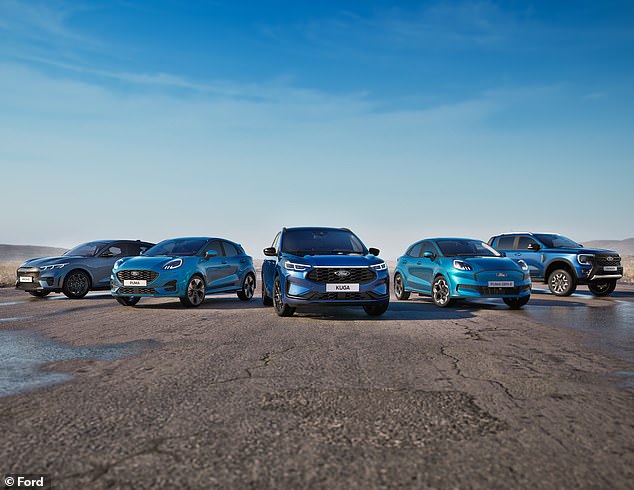
BlueCruise is already available on selected Mustang Mach-E EVs (left). However, the (from left to right) Puma, Kuga, Puma Gen-E and Ranger PHEV from spring 2026 will also be equipped
Which Ford vehicles is it available in? How much does BlueCruise cost?
BlueCruise will be available on selected Puma, Puma Gen-E, Kuga and Ranger PHEV new model year vehicles from spring 2026 if they are equipped with the Driver Assistance Pack.
Subscription options and pricing will be announced closer to on-sale date.
But the feature was previously free customers for the first 90 days when it launched in the Mach-E. After the 90 days it then cost a monthly subscription of £17.99, so it’s likely to be a similar amount when it rolls out further in 2026..

Ford’s ‘hands-free’ driving feature is now available on a further four models. Here’s how the system works
BlueCruise in more detail – is it safe?
BlueCruise builds on Ford’s Intelligent Adaptive Cruise Control (IACC).
It helps control the steering, acceleration, braking, lane positioning and safe distances from the vehicle ahead by monitoring the road markings, speed signs and evolving traffic conditions, from motorway speeds to stop-and-go traffic.
When BlueCruise is engaged on an approved motorway – Blue Zones – it allows the driver to take their hands off the steering wheel if they continue to pay attention to the road ahead.
Before transitioning to hands-free driving, BlueCruise-equipped vehicles confirm that lane markings are visible, that the driver has their eyes on the road and that other conditions are appropriate.
To do this BlueCruise uses a combination of radars and cameras to detect and track the position and speed of other vehicles on the road.
A forward-facing camera detects lane markings and speed signs and a driver-facing camera checks the driver’s eye gaze and head position – even when they are wearing sunglasses.
